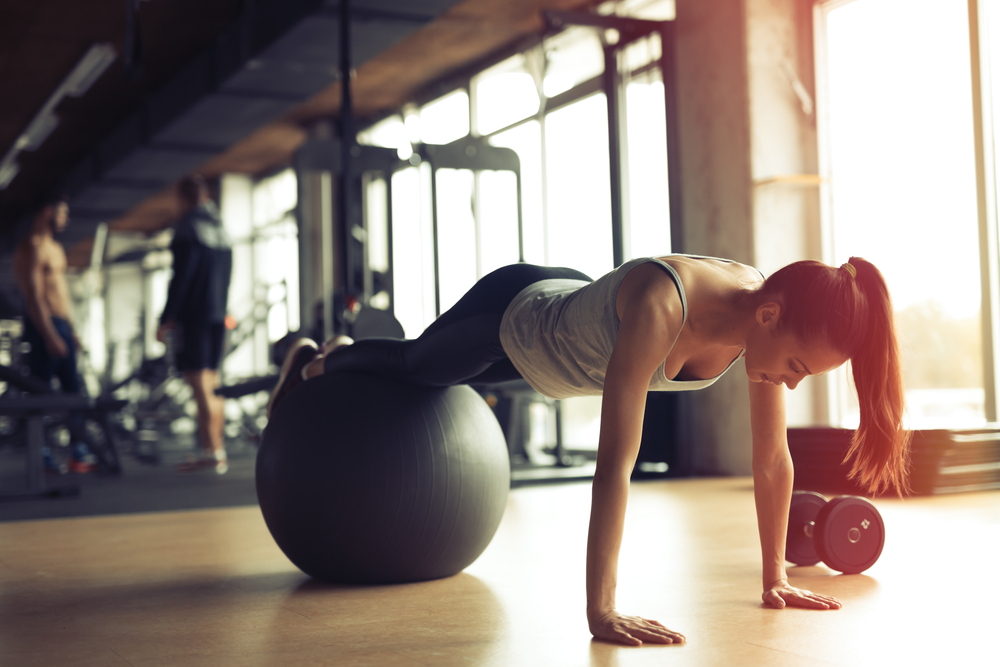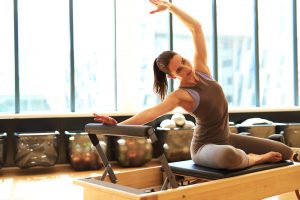
Pilates for Athletes: How It Can Improve Performance
Improving performance is crucial whether you’re a professional athlete or a weekend warrior. Pilates is an exercise method that uses controlled movement and breathing techniques to improve strength, flexibility, and balance with minimal impact. It is becoming increasingly popular among athletes as a means of improving their performance alongside more conventional training methods like weightlifting and cardiovascular exercise.
In this article, we’ll discuss how Pilates can benefit athletes by increasing strength and flexibility and decreasing the risk of injury. We’ll talk about the many ways in which athletes can benefit from Pilates, as well as the various Pilates exercises and methods that are appropriate for them, and why it’s so important to include Pilates in your regular fitness and training regimen.
1). Improved Strength
Athletes of all kinds can benefit from doing Pilates to increase their strength. For starters, pilates can assist in the formation of a solid core, which is fundamental to many sports. Pilates also works the back and pelvic floor muscles—all of which are crucial for upright posture and stable movement in sports—through a variety of exercises. These routines strengthen the body as a whole, which can result in enhanced speed and strength.
Pilates can also help improve athletic performance by building strength in the core and the arms and legs. Leg circles, bridges, and shoulder bridges are all great Pilates exercises for strengthening and toning your lower body. A similar effect can be achieved by performing upper-body exercises such as arm circles, chest lifts, and shoulder blade squeezes. A greater range of motion and less likelihood of sports injury are two additional benefits you may see from regularly practising Pilates.
2). Increased Flexibility
Pilates is a great way for athletes to improve their flexibility, which is necessary for top-tier performance. In order to increase the range of motion and create more fluid movements, Pilates can help lengthen muscles and improve joint mobility.
The hamstrings, hip flexors, and back muscles, which can tighten up and limit movement, are just a few of the muscle groups that Pilates exercises can target. The risk of injury can be decreased and overall flexibility can be improved by concentrating on these areas. A safe and efficient method for athletes of all skill levels to improve their flexibility, Pilates exercises can also be altered to meet individual needs and goals.
Athletes’ overall body awareness and alignment can be improved by incorporating Pilates into their training regimen, which can result in better posture and movement patterns. Sports performance can improve as a result, and the chance of injury brought on by bad posture or movement mechanics can be decreased. Athletes can increase their performance and prevent injuries by practising Pilates to increase their flexibility.
3). Improved Balance
For athletes, Pilates can be a great way to enhance their balance, which is crucial for sports that call for agility, coordination, and quick changes in direction. Pilates exercises emphasise strengthening the core, enhancing stability, and aligning the body—all of which are essential for preserving balance. Pilates can help athletes improve their proprioception, which is the body’s capacity to sense its location in space, through the use of specific movements and techniques. As a result, athletes are able to exert better motor control, lower their risk of falling, and improve performance.
By emphasising the deep stabilising muscles that support the spine, hips, and shoulders, Pilates helps to improve balance. These muscles, also referred to as the core muscles, assist in preserving proper alignment and averting compensatory movements that might result in injury. The strength and stability of the core muscles can be enhanced through Pilates exercises like the single-leg stretch, side-lying leg lifts, and swan prep, which will improve balance and control.
By using unsteady surfaces like the Pilates ball, foam roller, and balance pad, Pilates also helps with balance. Athletes are forced to use their core and stabilising muscles to prevent falling because this equipment tests the body’s ability to maintain balance. Balance, coordination, and proprioception can all be enhanced with Pilates exercises like the seated ball circles and the standing balance on the foam roller.

4). Reduced Risk of Injury
Athletes can lower their risk of injury by practising Pilates, a low-impact form of exercise. Through rigorous practice and competition, athletes frequently place a great deal of stress on their bodies, which can result in overuse injuries and other forms of physical harm. Pilates places a strong emphasis on improving posture, increasing flexibility, and strengthening the core, all of which can help to reduce the risk of injury and boost athletic performance.
Improved body awareness is one of the main advantages of Pilates for athletes. Pilates exercises call for a great deal of focus and control, which can aid athletes in becoming more conscious of their bodies and how they move. Athletes who are more aware of their surroundings may be able to spot their own weaknesses or imbalances and work on them to avoid injuries and enhance performance.
Pilates can support the larger muscle groups used in athletic movements by strengthening the smaller stabilising muscles that support them. Athletes can increase their overall stability and balance by strengthening these smaller muscles, which can help them avoid falls and other types of injuries. Pilates can also help to increase flexibility and range of motion, which can lower the risk of soft tissue injuries like sprains and strains.
Incorporating Pilates Into Your Fitness And Training Routine
Pilates can be a useful addition to an athlete’s training program. Pilates can lower the risk of injury while also enhancing overall performance and fitness. Pilates offers a variety of safe, efficient exercises and techniques that can be customised to meet the specific needs and objectives of athletes.
Using Pilates apparatus like the reformer or Cadillac is one way to include Pilates in an athlete’s training regimen. These tools can assist athletes in isolating and focusing on particular muscles, enhancing their strength and flexibility. For instance, leg exercises on the reformer can help cyclists and runners build stronger quadriceps and hamstrings, which can increase their speed and power.
Mat-based Pilates exercises can be incorporated into a pre- or post-workout routine as another way to incorporate Pilates. These exercises can assist athletes in obtaining better balance and control, which can lead to improved performance on the field or court. By enhancing joint mobility and stability, pilates can also aid in the prevention of common sports injuries like sprains and strains.
A mental break from the demands of their sport can also be provided by integrating Pilates into an athlete’s training regimen. Pilates can enhance an athlete’s body awareness and mindfulness while also assisting them in concentrating on their breath and movements. This can help athletes feel less stressed and anxious and perform better under pressure.
Final Thoughts
Improved strength, flexibility, balance, and a lower risk of injury are just a few advantages of including Pilates in an athlete’s fitness and training regimen. Pilates exercises can be customised to an athlete’s specific needs and objectives, enhancing performance and lowering the risk of injuries. Athletes can achieve optimum physical fitness and excel in their sport by incorporating Pilates into a comprehensive training program.
Consider including Pilates in your fitness routine if you’re an athlete looking to improve your performance and lower your risk of injury. Determine your unique needs and goals together with a qualified instructor to create a program, and make Pilates a regular part of your exercise routine. You can develop a stronger, more flexible, and balanced body that will help you perform at your peak on the field, court, or track with commitment and hard work.
Contact Upwell Health Today
If you’re an athlete looking to improve your performance and prevent injury, consider incorporating Pilates into your training routine. Whether you’re a professional athlete or just starting out, Pilates can provide numerous benefits to help you reach your goals. At Upwell Health Collective, we offer Pilates classes and personal training sessions tailored to individual needs and goals. Contact us today to learn more about how we can help you achieve your fitness and athletic goals.
Please get in touch with us at Upwell Health at (03) 8849 9096 or book an appointment today.
